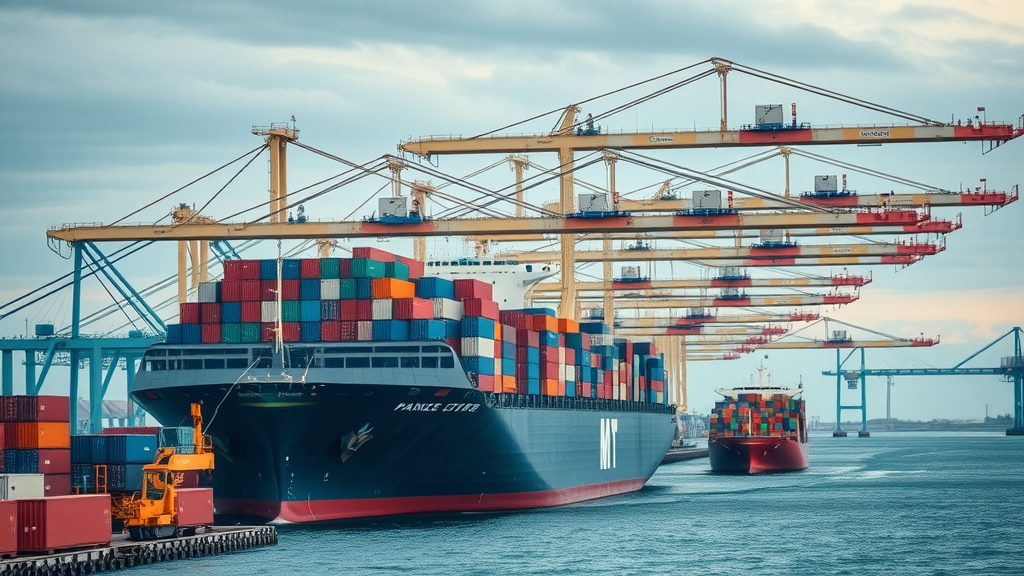“Did you know nearly 80% of business owners underestimate the true value of their business, potentially leaving thousands—or millions—on the negotiation table?”
A successful business valuation doesn’t just influence the sale price—it can truly transform your future. Whether you’re planning to sell, create a succession plan, or simply grow with confidence, knowing how much your business is really worth gives you clarity, leverage, and the competitive edge most owners miss out on. In this comprehensive guide, you’ll discover the key strategies, essential valuation methods, and actionable steps that turn overlooked numbers into remarkable windfalls. Ready to unlock your sale price potential? Let’s reveal the secrets every business owner should know!
What You'll Learn
- Why accurate business valuation is vital for every business owner
- Core business valuation methods—and when to use them
- How to boost your business’s valuation before you sell
- Answers to the most common business valuation questions
- Expert tips and real-world case studies to maximize your exit value
Unlocking Business Valuation: Why Every Business Owner Should Know Their Numbers
Every business owner benefits from understanding their business valuation, regardless of whether a sale is imminent. Accurately knowing your business’s worth allows you to make strategic decisions, secure financing, negotiate better partnerships, and create an effective succession plan. Without this number, many owners leave money on the table due to underestimation, which can cause long-term regret when it comes time to sell or transfer the business.
Common misunderstandings—like confusing annual revenue with actual business value, or believing that only large corporations need formal valuations—often lead to missed opportunities. For example, business owners who’ve relied solely on rough estimates or informal appraisals during negotiations found themselves accepting lower offers than their businesses could have commanded. In contrast, those armed with accurate, professionally supported valuations frequently secure higher sale prices and more favorable terms.
An accurate business valuation isn’t just a number; it’s your most powerful negotiating tool. Knowing your numbers puts you in control—giving you the facts to back up your asking price and attract serious buyers. Imagine learning a hidden asset or undervalued cash flow could boost your sale price by 10% or more. For many business owners, that’s the difference between a comfortable retirement and a life-changing windfall.

- Benefits of business valuation for business owners: Informs decision-making, increases confidence during negotiations, reveals growth opportunities.
- Common misconceptions about business valuations: Only for large companies; based solely on revenue; not needed unless selling today.
- Real-life examples highlighting missed opportunities: Owners who guessed on price lost thousands; those who used accurate valuations earned more.
- How an accurate valuation impacts your sale price: Establishes negotiation power, sets realistic expectations, uncovers hidden value.
Essentials to Master Before Pursuing Business Valuation
Before jumping into any business valuation, business owners should understand several key concepts. Knowing the role of fair market value, gathering complete documentation, and preparing precise financial statements all contribute to a smoother, more accurate valuation process. This groundwork ensures that your business valuation reflects reality and strengthens your case in negotiations.
The importance of fair market value lies in its ability to provide an objective baseline. If your documentation is incomplete or your financials are not up-to-date, any business valuation method applied will be less effective. Prepare by collecting current and historical cash flows, profit and loss statements, and a detailed list of your assets and liabilities. For owners who aren’t used to regularly updating their records, this may require extra time—but the results will ultimately boost your credibility and value.
Lastly, it’s vital to set realistic expectations. The path from starting a business valuation to finalizing a sale is rarely linear. Sudden economic changes, industry trends, or unexpected business developments can change outcomes. Knowing the essentials—and maintaining a business valuation checklist—puts you in the best position for success.
- The role of fair market value: Foundation for unbiased negotiations, especially important in divorce proceedings or succession planning.
- Key documentation and data required: Financial statements, cash flows, business registrations, contracts, intellectual property listings.
- Preparing your financial statements: Ensure clarity, accuracy, and completeness for a true picture of your business’s worth.
- Setting realistic expectations: Factors like industry volatility and market demand can impact valuation outcomes.
Core Valuation Methods Every Business Owner Must Understand
Choosing the right business valuation method can make a significant difference to your final sale price. Three primary valuation methods dominate the industry: the Income Approach , the Market Approach , and the Asset Approach . Each offers unique perspectives on value and carries its own pros and cons. Understanding these will help you and your advisors pick the method—or combination—that will maximize your results.
The Income Approach weighs heavily on future cash flows and the potential of your business to generate returns. The Market Approach benchmarks your business against comparable companies, providing context from real-world sales or publicly traded company performance. Lastly, the Asset Approach sums up the total value of your tangible and intangible assets, minus liabilities, giving a snapshot of the business’s net worth if liquidated.
Each method’s influence varies based on your industry, company size, cash flows, tangible assets, and unique circumstances. For some business owners, using a blend of these approaches results in the most balanced and credible valuation. Consult a professional if you’re unsure which to prioritize—because picking the wrong method can leave money behind.
As you evaluate which valuation method best fits your business, it’s also crucial to understand the role of seller’s discretionary earnings in the process. For a deeper dive into how these earnings impact your valuation and why they matter, explore this guide on understanding seller’s discretionary earnings for valuation .

- Overview of different valuation methods: Income, Market, and Asset Approaches each serve specific purposes.
- How each business valuation method influences results: Income approach can capture future potential, while asset approach may be more conservative.
- When to use income vs. market approach: Market approach works well for well-established industries with ample market data; income approach is crucial when future cash flow potential matters most.
- Pros and cons of different valuation methods: Income-based can be subjective; market comparables may be hard to find; asset approach may undervalue businesses rich in intangible assets.
Comparison of Major Business Valuation Methods
| Method | What It Measures | Best For | Pros | Cons |
|---|---|---|---|---|
| Income Approach | Future cash flows and earning potential | Profitable businesses with steady revenue | Captures growth, considers future performance | Requires accurate forecasting and selection of discount rate |
| Market Approach | How similar businesses are valued/sold | Businesses in active, transparent markets | Reflects actual market trends and buyer behavior | Finding reliable comparables can be challenging |
| Asset Approach | Sum of tangible and intangible assets minus liabilities | Asset-heavy businesses or those winding down | Provides a baseline or “floor” value | May undervalue businesses with strong earnings or brand |
The Income Approach: Turning Cash Flow Into Sale Price Leverage
The Income Approach focuses on how much cash the business is expected to generate in the future—and then calculates what that stream of earnings is worth in today’s dollars. This method is preferred by buyers and investors seeking strong returns or robust financial performance. For business owners, optimizing cash flow and understanding how it impacts your valuation could mean achieving a premium sale price.
This approach requires careful examination of historical and projected cash flows, as well as adjustments for nonrecurring expenses, owner compensation, or changes in working capital. The outcome is then "discounted" back to present value using an appropriate discount rate (reflecting the risk level and cost of capital). If your business has stable and predictable earnings, the income approach is often your best tool for maximizing value and negotiating leverage.

Decoding Cash Flow: The Foundation of Any Business Valuation
Cash flow represents the actual net cash generated by a business after all expenses, taxes, and changes in working capital. For business valuation, it’s essential to analyze and adjust historical cash flows—removing one-time gains, normalizing owner compensation, and considering future trends. This adjusted cash flow, sometimes called “normalized” or “recast” cash flow, is crucial for painting a clear and compelling picture for buyers or investors.
Accurate historical cash flow analysis reveals both true earning potential and operational efficiency. For example, businesses with steady, predictable cash flows typically fetch higher multiples, as their future cash flow is seen as more reliable. On the other hand, erratic cash flows or hidden liabilities can lead to discounts or failed negotiations. Business owners should meticulously review and clean up their financials prior to a sale to maximize attractiveness and clarity.
- Define cash flow for business valuations (net income + depreciation and amortization – changes in working capital)
- Adjust historical cash flows to reflect “owner-neutral” performance
- Accurate cash flows provide confidence to buyers and investors, impacting final sale price
Discounted Cash Flow (DCF): Unveiling Future Value Today
The discounted cash flow (DCF) method estimates the present value of all future cash flows a business is expected to produce. It’s a cornerstone of the income approach and powerful for businesses with predictable earnings. Here’s how it works: you project future cash flows over a set period, add a “terminal value” to capture ongoing value after the projection period, and then discount everything back to today using a discount rate that reflects market risk and your company’s specific risk profile.
Business owners should consider DCF analysis when their business has stable, recurring revenues or when other methods (like market comparables) are unavailable or unreliable. The accuracy of the DCF depends heavily on the quality of cash flow forecasting and the chosen discount rate, so expert financial input is often wise. By translating uncertain future earnings into a solid present-day value, DCF helps owners argue for a higher business valuation and provides strong reassurance to serious buyers.
- DCF calculates present value using projected future cash flows and an appropriate discount rate
- Best used for growing businesses or industries with fluctuating market data
- Key factors: realistic projections, careful selection of discount rate, and clear terminal value assumptions
“A sound understanding of discounted cash flow can dramatically impact the perceived and actual value of your business.”
The Market Approach: Benchmarking Against Business Owners and Industry Peers
The Market Approach compares your business to others in your industry, looking at how similar businesses are valued or sold. It’s powerful for well-established industries where ample market data and completed transactions are available. If your business has clear industry benchmarks, the market approach offers a real-world litmus test, helping both sellers and buyers understand what’s reasonable—and what’s exceptional—for your size and market position.
Business owners benefit from this approach as it grounds negotiation expectations in reality. Rather than guessing what a buyer might pay, you can point to concrete examples, adjusting for differences in cash flows, size, or business model. This method is especially useful for preparing to engage with brokers, investment bankers, or potential acquirers who are referencing current market conditions to frame offers.

Comparative Analysis: How Business Valuation Methods Use Industry Data
Comparative analysis underpins the market approach—using real “comps” or comparables from similar business transactions. For business owners, this means looking for publicly disclosed sales of businesses in the same sector, or using proprietary databases accessed by valuation professionals. This data allows you to apply valuation multiples (such as price-to-earnings or price-to-revenue) to your own performance.
Analyzing competitors and industry peers can also highlight strengths and weaknesses that your business possesses relative to others. If your adjusted cash flows, growth rate, or customer base surpasses the average, your business might command a premium. However, finding suitable comparables isn’t always easy—especially in niche industries or among businesses with unique customer bases or differentiating assets.
- Role of market comparables in business valuations: anchors your value in real, verifiable sales
- Gather and analyze competitor data for “apples-to-apples” comparison
- Competitive benchmarking positions your business for more confident negotiations
Applying Market Approach in Your Business Valuation Process
To implement the market approach, first, select comparables with similar size, growth, and cash flow characteristics. Adjust for major differences—like business model, location, or unusual vendor/customer contracts—to fine-tune the value applied. While this approach provides clarity and context, it has limitations; perfect comparables rarely exist, so careful judgment is essential.
The best practice is to combine the market approach with others, validating findings and ensuring a fair market value is achieved. For business owners, this approach is especially effective when preparing for valuation discussions with buyers, banks, and business brokers, who will also be eyeing comps in their due diligence.
- Choose comparables that match your cash flow, size, and industry type
- Make rational adjustments for unique features of your business
- Apply market multiples carefully; seek professional guidance if data is unclear
Why Fair Market Value Matters in Every Business Valuation
Fair market value is the price a willing, informed buyer would pay to a willing, informed seller in an open, competitive market. This standard is the cornerstone for negotiations, legal settlements, divorce proceedings, and even estate planning. Understanding the distinction between fair market value and intrinsic value (what you—the owner—personally believe your business is worth) is critical, especially in high-stakes deals.
For business owners, referencing fair market value ensures expectations remain realistic and leads to smoother negotiations. External buyers—especially institutional ones—will look to fair market value to justify their offers and investment decisions. Overestimating your value based on emotional investment or internal measures is the most common valuation pitfall, often resulting in deals falling through or dragging out unnecessarily.

- Defines a neutral, market-driven price standard for both buyers and sellers
- Ensures valuations aren’t clouded by emotion or unrealistic expectations
- Foundational for deals involving succession planning or divorce settlements
Step-by-Step Guide: The Complete Business Valuation Process for Sellers
Navigating the business valuation process requires structure and preparation. First, conduct an initial assessment and gather all necessary financial documents. Choose the right business valuation method based on your business’s financial health, industry, and market environment. Most owners benefit from engaging with experienced valuation professionals—a neutral third party adds credibility and often uncovers value you might overlook.
Once a method is chosen and documentation provided, valuation professionals will analyze your company, apply the relevant methods, and produce a detailed valuation report. Review this report with your advisor, ensure you understand all the inputs and assumptions, and don’t hesitate to ask for clarification or adjustments. Remember, the more robust your documentation and preparation, the stronger your negotiating position and ultimate sale price will be.
- Initial assessment and documentation: Financial statements, cash flows, contracts, intellectual property, balance sheet
- Select the most suitable business valuation method for your unique scenario
- Engage with price valuation professionals—ask about their experience, credentials, and references
- Review your business valuation report thoroughly before sharing it with potential buyers
Avoiding Common Pitfalls in Business Valuation for Owners Preparing to Sell
Too often, business owners fall into traps that can undervalue their business or tank negotiations. Overestimating the emotional value of your business is one of the most common mistakes—it rarely reflects fair market or potential buyer perspectives. Ignoring adjusted cash flows or hidden liabilities, such as outstanding debts or off-balance-sheet obligations, leads to inflated and easily disputed numbers.
Another frequent error is neglecting competitive benchmarking. Without comparing your business’s performance to industry peers, you may overlook strengths or weaknesses impacting your value. Avoid these missteps by rigorously analyzing your finances, seeking outside perspective, and remaining objective. Remember: valuation methods only work when applied to accurate, unbiased data.
- Avoid overestimating emotional value vs. true market value
- Ensure all cash flows and liabilities (hidden or otherwise) are accounted for
- Regularly benchmark your business against similar business owners for competitive insight
Case Studies: How Business Valuations Boosted Real Sale Prices
Real-world examples highlight the transformative power of professional business valuations. For instance, a manufacturing business owner once relied solely on the book value of equipment, neglecting the robust recurring cash flows and proprietary intangible assets. After a thorough analysis using the income approach, the business’s market value was nearly double the original estimate—resulting in a sale price far above expectations.
Another case study features service-based business owners who applied a blend of the market and income approaches. By benchmarking similar business sales in their industry and presenting detailed normalized cash flows to buyers, they achieved a bidding war and increased the initial sale offer by 20%. These cases illustrate that a data-driven, comprehensive valuation process is worth its weight in gold.

- Examples: Leveraging professional business valuation methods increased sale price by up to 100%
- Lessons: Robust documentation, clear methodology, and competitive benchmarking drive optimal outcomes
- Outcomes: Professional valuations consistently yield higher, faster, and smoother closings
“Proper business valuation methodology is the most overlooked asset in the business owner’s arsenal.”
Expert Tips: Maximizing Value with Strategic Valuation Methods
To maximize your business valuation before selling, experts recommend enhancing your cash flow through operational improvements, cost reductions, or diversified customer portfolios. Leveraging multiple valuation methods—not just one—can strengthen your negotiating position and provide more balanced, defensible numbers. Also, timing your valuation when market trends are favorable (high industry demand, low interest rates) can yield substantial benefits.
Before you even consider selling, audit your business to improve profitability, systematize processes, and resolve any outstanding legal or financial issues. Then, align your business valuation process with professional advisors who know your industry inside and out. These moves can turn your sale from average to exceptional.

- Focus on enhancing predictable cash flow prior to your exit
- Apply multiple valuation methods for a 360-degree view of your business’s worth
- Time your exit to align with market highs or favorable industry trends
Your Business Valuation Checklist for a Successful Sale
Don’t proceed without a plan! This actionable business valuation checklist ensures nothing falls through the cracks. Review your cash flows, gather reliable documentation, select the right advisors, and prepare questions in advance. Proactive preparation streamlines the valuation process, impresses buyers, and eliminates last-minute surprises.

- Pre-sale cash flow review: Clean up and normalize financial statements
- Documentation: Gather business registrations, contracts, and asset listings
- Choose experienced valuation professionals: Ask for credentials and recent case studies
- Questions to ask: What methods will you use and why? How are discount rates determined?
People Also Ask: Answering Business Owners’ Top Questions on Business Valuation
How do I calculate the value of my business?
To calculate your business value , choose a primary valuation method (income, market, or asset approach) and follow a structured process. For the income approach, estimate adjusted future cash flows, select a discount rate that reflects risk, and discount those cash flows back to present value (using the DCF formula: Value = Sum of [Future Cash Flow / (1 + Discount Rate) n ]). The market approach multiplies your earnings or revenue by industry-standard multiples derived from similar business sales. For the asset approach, subtract your total liabilities from your total tangible and intangible assets as stated on the balance sheet.
Example calculation (income approach): If projected annual cash flow is $100,000, and the discount rate is 15%, a simple DCF for one year would be $100,000 / (1 + 0.15) = $86,956. Expand this for multi-year projections, and add terminal value for true market realism.

How much is a business worth with $500,000 in sales?
A business with $500,000 in annual sales might be valued anywhere from $250,000 to $1,000,000 or more, depending on the industry, profit margins, and fair market value conditions. Applying the market approach, you’d reference sales multiples for similar business owners in your sector—service companies may trade at 0.5–1.5x revenue, while technology firms can command even higher multiples depending on growth trajectory. For more accurate results, use the income approach by estimating cash flow margins and discounting future cash flows accordingly.
Key considerations include recurring revenue, adjusted cash flow, intangible assets, and whether your industry is growing or cyclical. Consult comparative market data for businesses like yours to fine-tune your value estimate.
What is the valuation of a company if 10% is $100,000?
If 10% of your company is valued (by a transaction or offer) at $100,000, the implied total company value is $1,000,000. This is a quick math estimation, but it assumes all shares or equity units are valued equally and that no control premiums or minority discounts apply. In practice, company size, industry, and minority interest adjustments can alter final values—so professional guidance is recommended for high-stakes deals.
How much is a business that makes $1 million a year worth?
If a business makes $1 million a year (presuming net profit or normalized cash flow), value can range greatly. Using the market approach, businesses in stable industries might sell for 2x–5x earnings. Thus, $2M–$5M is a common ballpark range, but the income approach, applying a discounted cash flow method, could produce a higher or lower result based on future earnings, growth rate, cost of capital, and risk profile. The presence of valuable intangible assets or real estate also influences final value.
FAQ: Business Valuation Questions All Business Owners Should Know
- How often should business owners perform business valuation? It’s wise to perform a business valuation annually, or at least every 2–3 years, particularly if you’re considering a sale, merger, or undergoing significant change (like leadership transitions or adding investors). Regular valuations keep you prepared and give you a benchmark for growth.
- What factors impact the valuation method selected? Industry norms, business size, growth stage, asset mix, predictability of cash flows, and available comparable market data all influence which valuation method (income, market, or asset) is most suitable.
- Should I DIY or hire a professional for my business valuation? While DIY tools and calculators are useful for rough estimates, professional valuations are recommended for high-stakes transitions. Experts can normalize cash flows, select accurate market comparables, and apply complex methods like DCF or real options that capture true value and stand up in negotiations or legal proceedings.

Key Insights for Business Owners: What to Remember About Business Valuation
- Accurate business valuation can dramatically influence your sale price and negotiation outcome
- Combining several valuation methods produces a balanced picture of your business’s worth
- Using a business owner checklist ensures you don’t miss critical documentation or preparation steps
- Staying proactive—especially with updated cash flows and tracking industry trends—keeps your business valuation realistic and competitive

Level Up Your Business Sale: Start a Comprehensive Business Valuation Today
- Ready to maximize your sale price? Connect with professional business valuation advisors now to secure your business’ true value.
Action Step: Take the first definitive step—organize your records and reach out to a business valuation expert. Your business’s future value is too important to leave to chance!
If you’re eager to take your preparation even further and ensure your business stands out to buyers, consider exploring the essential steps to prepare your business for sale successfully. This resource covers broader strategies—from operational improvements to due diligence readiness—that can make a significant difference in your sale outcome. By combining a robust valuation with comprehensive preparation, you’ll be positioned to command top dollar and navigate the sales process with confidence. Discover the full checklist and advanced preparation tips here to elevate your exit strategy and maximize your business’s value.
 Add Row
Add Row  Add
Add 




Write A Comment